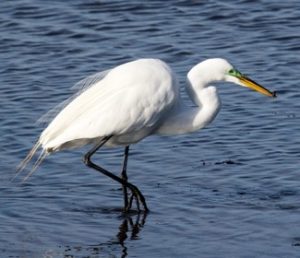Barrier Islands-Coastal Dune Scrub
Undeveloped stretches of the barrier island complex consist of extensive primary and secondary dune habitat along the ocean side and salt marsh and tidal flats on the backside of the barrier. Learn more >
Maritime Forest
Along the edges of the Barnegat Bay watershed, remnants of the Maritime Forest plant community have survived intense development pressures. Learn more >
Submerged Aquatic Vegetation (SAV)
Approximately 75% of the seagrass beds in New Jersey occur in the Barnegat Bay estuary. Seagrasses grow along the shallow margins of the bay in waters less than one meter in depth. Learn more >

Tidal Wetlands
Tidal salt marshes are the transition zones in estuaries, providing nursery, forage, and nesting habitat for fish and other wildlife and essential ecosystem services to the coastal communities of Barnegat Bay. Learn more >

Upland Forests and Freshwater Wetlands
The western shores of Barnegat Bay directly border the region of New Jersey known as the Pine Barrens or Pinelands. Learn more >

Related Links
Natural Resource Education Foundation of New Jersey
New Jersey Pinelands Commission
Pinelands Preservation Alliance
“Scientific Characterization of the Barnegat Bay-Little Egg Harbor Estuary and Watershed” (September 2001)

